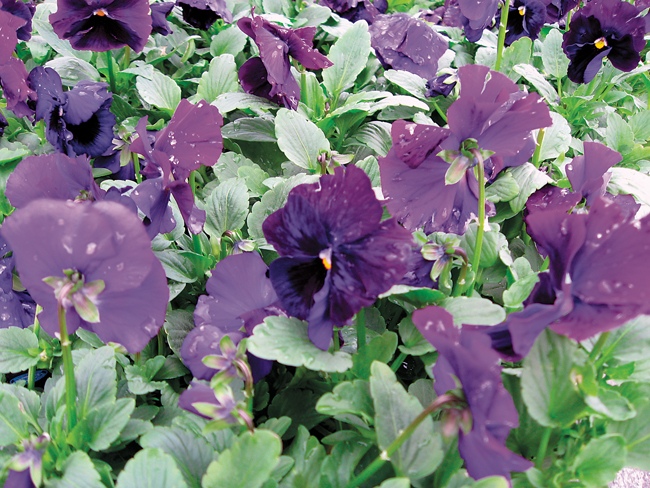Colorful, bright and sweet, pansies are a simple, eye-catching flower without any pomp or circumstance.
They are part of the viola genus. This durable flower can thrive even in inclement weather. In some regions of the country, pansies are treated as biennial plants, but in the Midwest and the South, they are generally considered to be annuals, according to the Department of Horticultural Sciences at the AgriLife extension of Texas A&M University.
Pansies and other violas can actually be used in food preparation. The flavor ranges from mild to grassy to wintergreen-esque. Only flowers that are grown organically, without chemicals, are safe for consumption.
Pansies and violas can be found in a variety of shapes and colors. Many are bicolored, making them a striking plant for their small size.
1. Plant pansies about 6 inches apart to allow for healthiest growth.
2. Keep the plants deadheaded. That means the dead, drooping blooms should be plucked from the stem to make room for the healthy parts of the plant to thrive. "Take the stem and all off," said Diane Young, a worker at The Barn Nursery.
3. Both violas and pansies can thrive in the ground or in planters. The key is to have fresh soil.
4. Young recommends Osmocote multipurpose plant food to feed the soil and Super Bloom for the flowers every two weeks. Check the soil for dryness, and water if needed.
5. Mulch helps keep the moisture in the ground.

